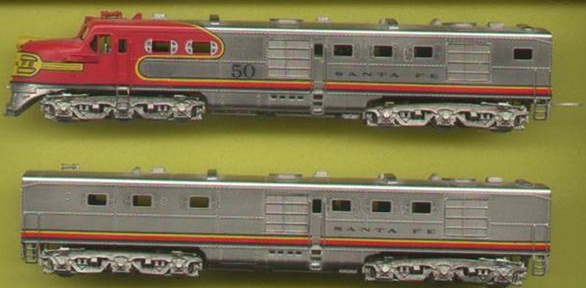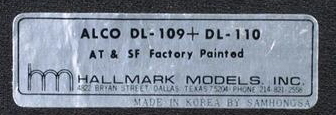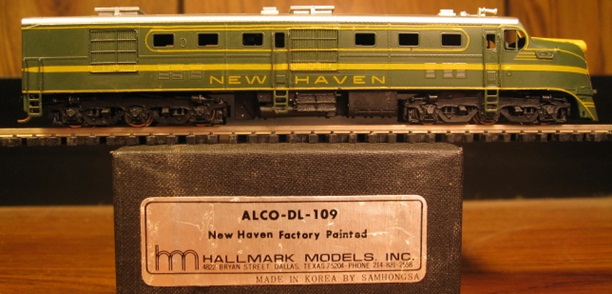



Introduced: 1984
As far as I know, these were only available as solo A (DL-109) units or A/B (DL-109/110) sets. I've never seen a DL-110 available by itself. In the case of the A/B sets, both units are powered. FWIW, Hallmark's "DL-110" designation for the ATSF B unit is incorrect (said unit was actually a DL-108). The Southern RR rostered the only DL-110 ever built.
As is generally the case with brass, these models lack lighting, window glazing, and couplers (although MT-friendly coupler pockets and screws are provided). As is also generally the case with brass, these models are gorgeous - sharp paint, 3-D handgrabs, bazillions of details, etc. Better still, the DL-109 units have fully detailed cab interiors (a feature rarely found in any N scale models, let alone brass).

The guts of these things are fairly typical of Samhongsa locomotive design. The brass chassis is completely minimalistic (with most of the actual heft being provided by the shell). Multi-piece plastic driveshafts turn worms inside the gear towers (which in turn drive the brass gears in the trucks). All wheels are geared. Ten of the twelve wheels provide pickup (IE, one wheel per truck doesn't). There aren't any traction tires, so I have no idea what that's all about. Current is collected by way of old-school wheel wipers and transferred to the motor via really old school wires (two per truck). The wheels are low-profile, so no problems running these on Code-55 rails.
What makes this locomotive special (at least as compared to other brass locos of its era) is its 5-pole, skew-wound motor. If it's not the very first brass loco so-equipped, it's certainly one of the first. Back in the 80's, most brass locos were stuck with simple 3-pole motors (and certainly not skew-wound). And wow, it really shows up in the performance - the top-end speed is surprisingly reasonable, and the slow-speed creep is very impressive. Additionally, this is one of the quieter running brass diesels I've yet encountered. Yeah, it makes more noise than, say, a modern Atlas or Kato diesel might. But for 80's brass, it's not bad at all (particularly at slower speeds). So, despite the hugely dated design (IE wires, wheel-wipers, etc), I really have to give these models an "A" rating (figuring the looks help to balance out the old-school guts).

As is generally the case with Hallmark brass locos, numerous spare parts are included in the box (hurray).
Removing the shell involves unscrewing the six tiny screws on the bottom of the chassis (one on the inside of each truck, and two on the outside of each truck). Once the screws are out, the shell will lift right off.
Grade: A